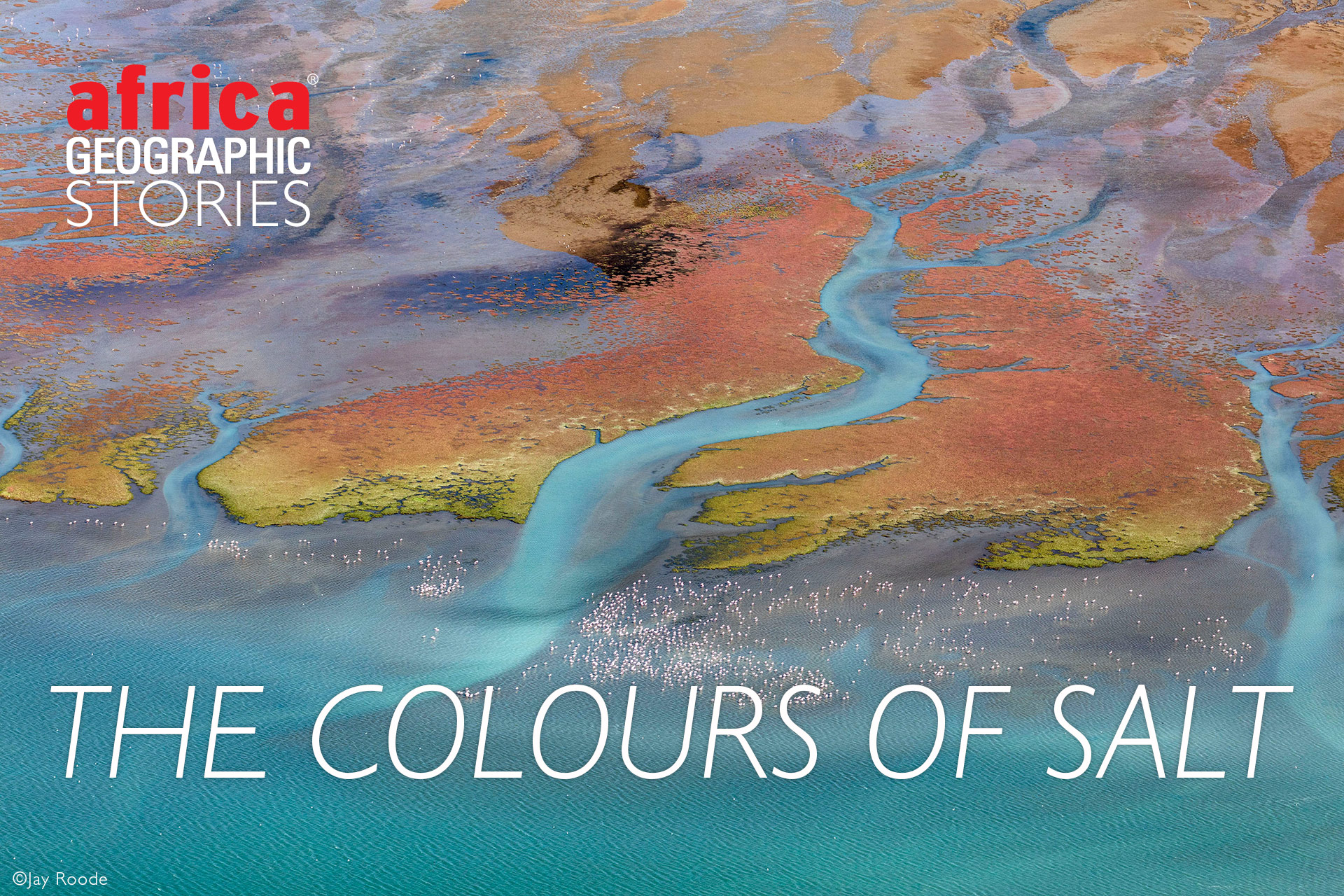
Aerial images of Namibia’s Kaleidoscope Coastline
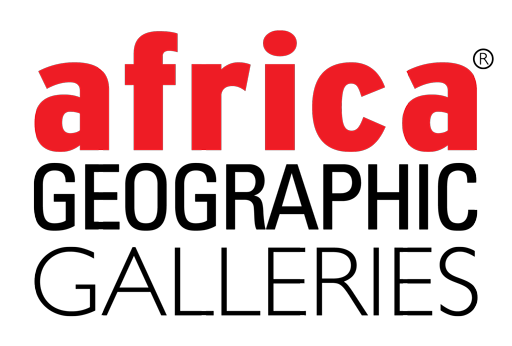

When the billowing plumes of Atlantic mist part to reveal the enchanting Dorob coastline, expanses of vividly coloured water sprinkled with thousands of lesser and greater flamingo appear in a mesmerizing kaleidoscope of colour. Flying this section of coastline is in short, an aerial photographer’s and nature lover’s paradise and will take your breath away.

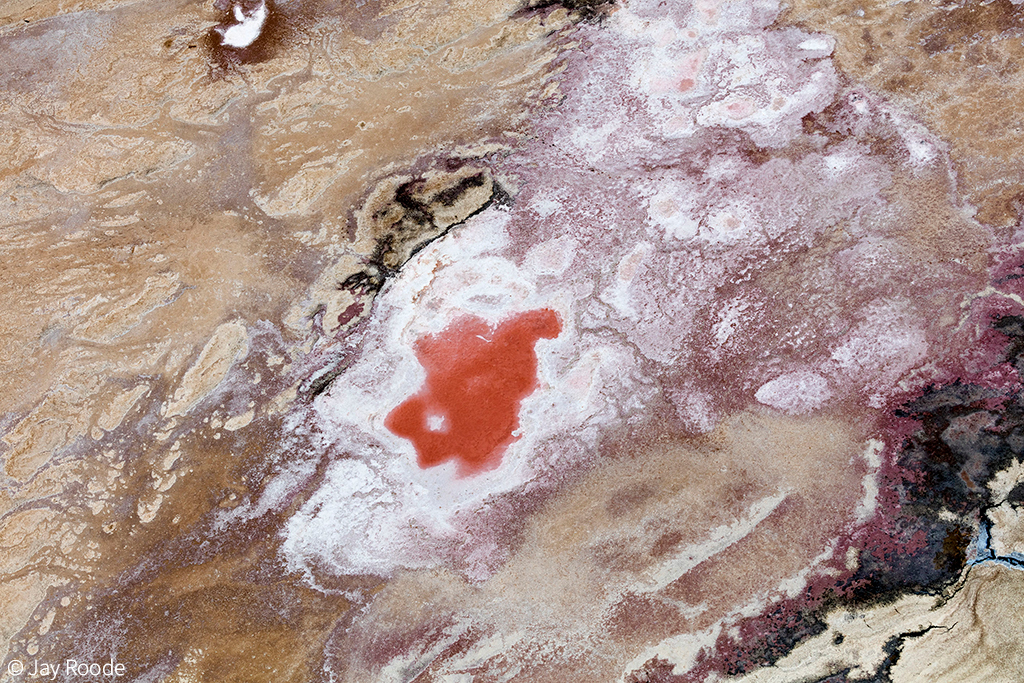

To the north of the Dorob coastline, brine pans line the shores in a display of colour, shape and texture that leaves one’s heart racing with the ethereal beauty of it all. Further south a patchwork series of lime and raspberry saline lakes, edges encrusted with crystals, sparkle against a treeless landscape until they reach the shores of the Walvis Bay Lagoon.
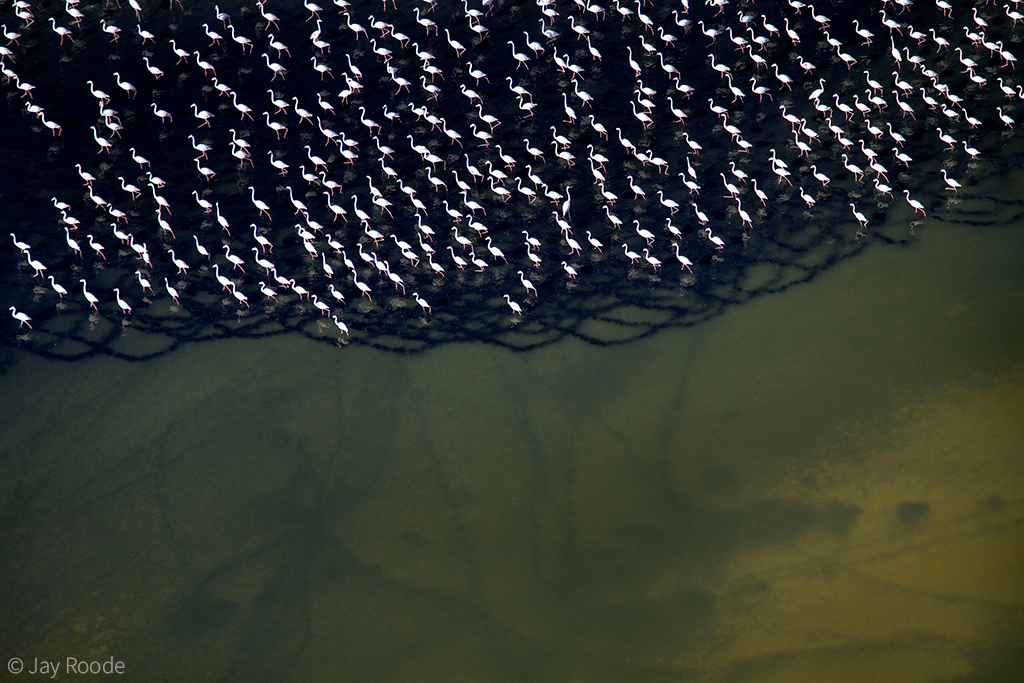
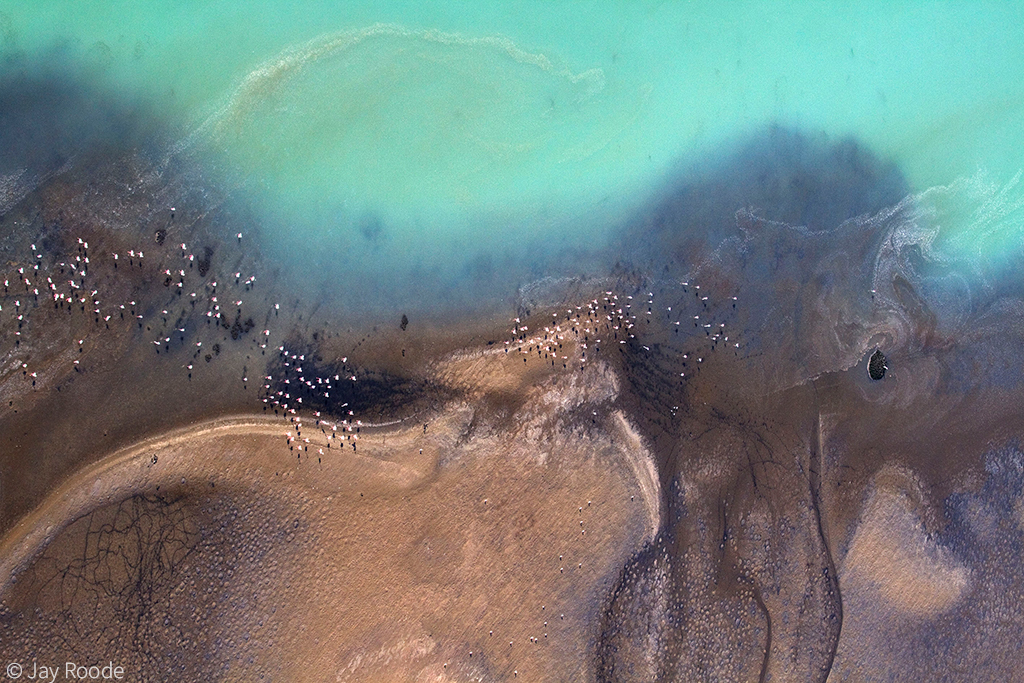
The cold Benguela current and its nutrient-rich waters, the commercial saline lakes and the Walvis Bay lagoon collectively made the area famous for the incredible profusion of birdlife it attracts each year. In this saline ecosystem, vast quantities of phytoplankton are produced which support other marine organisms such as algae and brine shrimp, food for many hundreds of thousands of resident and migratory birds including cormorants, terns, avocets and a profusion of shorebirds.

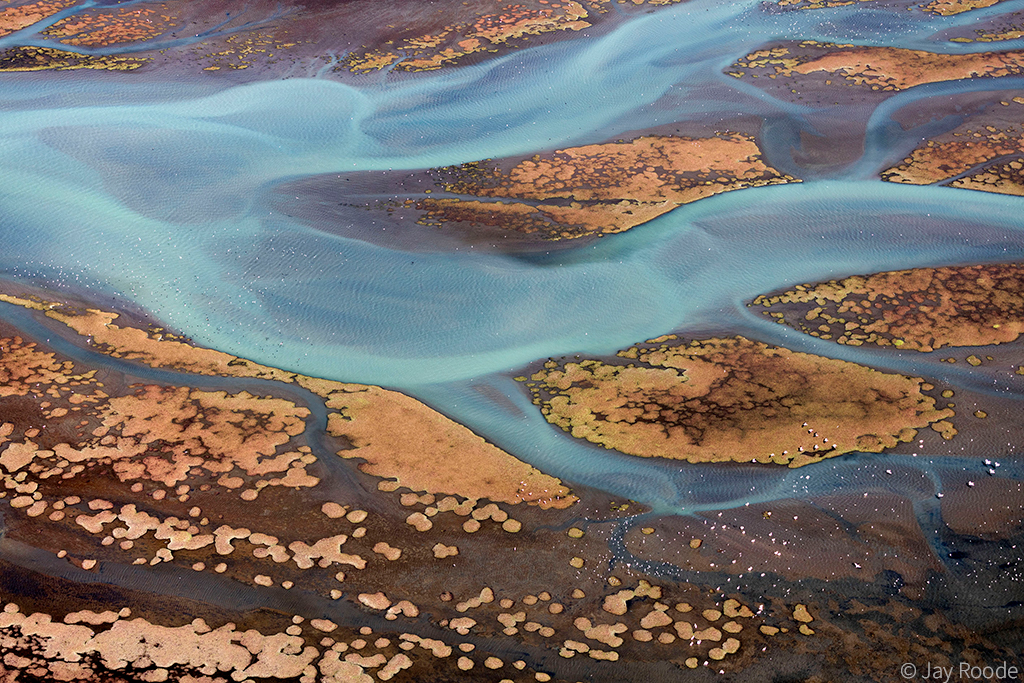

According to Birdlife South Africa, the mudflats and lagoons sheltered from the open ocean by a sand spit at Pelican Point make this the most important coastal wetland in southern Africa and is one of the three most important coastal wetlands in Africa in terms of numbers and species of birds.
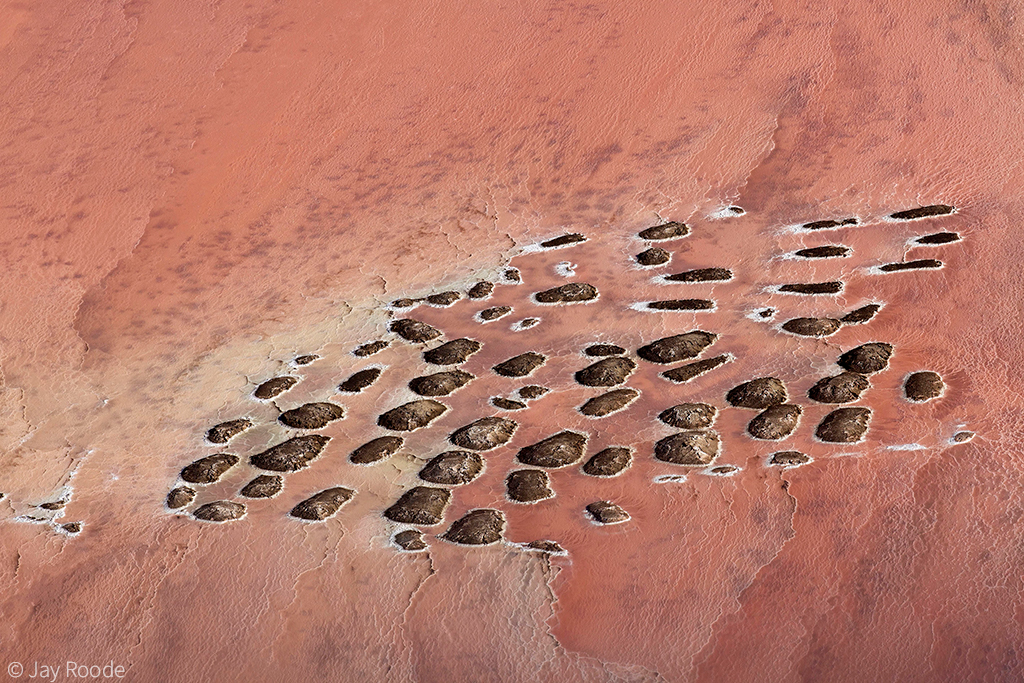
So how is it that these saline lakes display such gaudy colours? From lime green, clear turquoise to bright red these variations are caused by fluctuating concentrations of salinity and minerality and the various organisms that flourish in each. Cyanobacteria create the blue-green tones, and an algae called Dunaliella salina produces the rich pinks and reds. Brine shrimp rich in beta carotene are responsible for the rosy pink colour of the flocks of flamingos that forage this watery wonderland.![]()
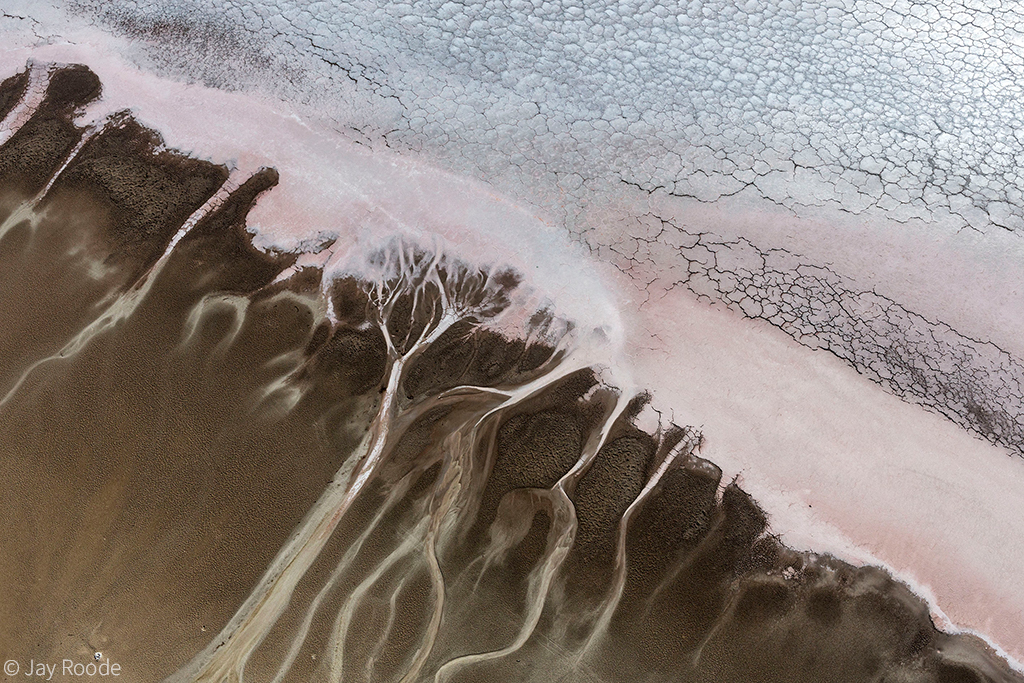
ABOUT THE AUTHORS
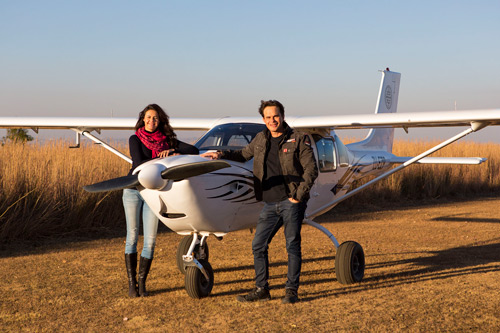 Flying thousands of hours in their specially modified aircraft, aerial photographers Jay and Jan Roode have spent more than a decade photographing some of the most remote and spectacular wilderness areas of Southern Africa from above.
Flying thousands of hours in their specially modified aircraft, aerial photographers Jay and Jan Roode have spent more than a decade photographing some of the most remote and spectacular wilderness areas of Southern Africa from above.
The continent of Africa has always held an irresistible allure and fascination for them, and they seem content only when free to roam the skies, capturing awe-inspiring images of the natural wonders of the region from above.
Their photography communicates their passion and reverence for the vast wild spaces of the region. As it allows us to start seeing whole ecosystems as entities in their own right; ecosystems that hold within them hundreds of thousands of expressions of life that need to be conserved.
To comment on this story: Login (or sign up) to our app here - it's a troll-free safe place 🙂.![]()





